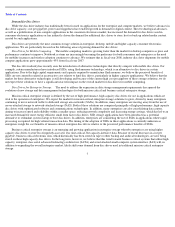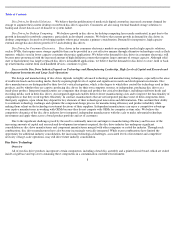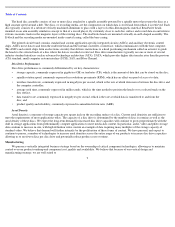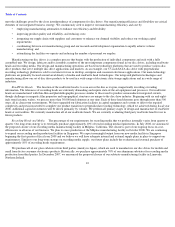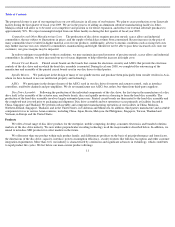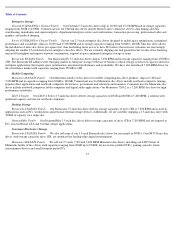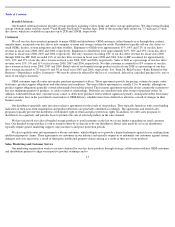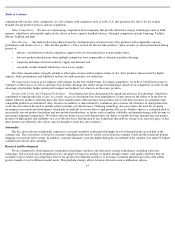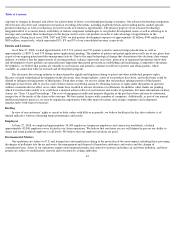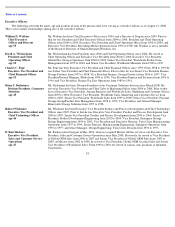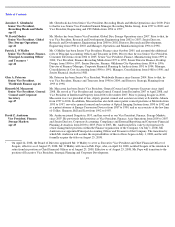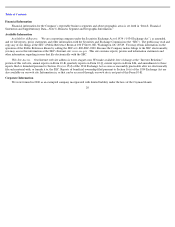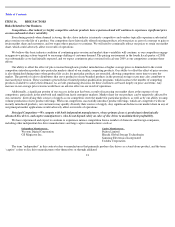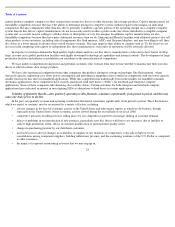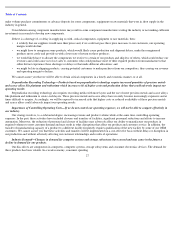Seagate 2007 Annual Report Download - page 18
Download and view the complete annual report
Please find page 18 of the 2007 Seagate annual report below. You can navigate through the pages in the report by either clicking on the pages listed below, or by using the keyword search tool below to find specific information within the annual report.
Table of Contents
We have established environmental systems and continually update our environmental policies and standard operating procedures for our
operations worldwide. We believe that our operations are in material compliance with applicable environmental laws, regulations and permits.
We budget for operating and capital costs on an ongoing basis to comply with environmental laws. If additional or more stringent requirements
are imposed on us in the future, we could incur additional operating costs and capital expenditures.
Some environmental laws, such as the Comprehensive Environmental Response Compensation and Liability Act of 1980 (as amended, the
“Superfund” law and its state equivalents), can impose liability for the cost of cleanup of contaminated sites upon any of the current or former
site owners or operators or upon parties who sent waste to these sites, regardless of whether the owner or operator owned the site at the time of
the release of hazardous substances or the lawfulness of the original disposal activity. We were identified as a potentially responsible party at
several superfund sites. At each of these sites, we have an assigned portion of the financial liability based on the type and amount of hazardous
substances disposed of by each party at the site and the number of financially viable parties. We have fulfilled our responsibilities at some of
these sites and remain involved in only a few at this time.
While our ultimate costs in connection with these sites is difficult to predict with complete accuracy, based on our current estimates of
cleanup costs and our expected allocation of these costs, we do not expect costs in connection with these superfund sites and contaminated sites
to be material.
We may be subject to various state, federal and international laws and regulations governing the environment, including those restricting
the presence of certain substances in electronic products. For example, the European Union (“EU”) enacted the Restriction of the Use of Certain
Hazardous Substances in Electrical and Electronic Equipment (“RoHS”), which prohibits the use of certain substances, including lead, in certain
products, including disc drives, put on the market after July 1, 2006 as well as the Waste Electrical and Electronic Equipment (“WEEE”)
directive, which makes producers of electrical goods, including disc drives, financially responsible for specified collection, recycling, treatment
and disposal of past and future covered products. Similar legislation has been or may be enacted in other jurisdictions, including in the United
States, Canada, Mexico, China and Japan.
If we or our suppliers fail to comply with the substance restrictions, recycle requirements or other environmental requirements as they are
enacted worldwide, it could have a materially adverse effect on our business.
17


